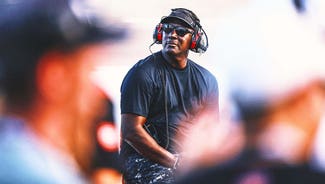
IndyCar full of tweeting drivers
Not long after the Toronto IndyCar race, Tomas Scheckter was online, criticizing fellow driver Alex Tagliani after a collision on the track.
A war of words ensued, in 140 characters or less.
''Just wondering one thing, why did everyone call him Thomas Wrecker,'' Tagliani wrote.
''(at)tagliani stop crying like a girl. U look silly. Come speak to me face to face edmonton,'' was Scheckter's response.
It wasn't an isolated exchange.
IndyCar drivers have become some of the most avid Twitter users among professional athletes, posting after practice sessions, qualifying runs, races, even when they're on the road or headed to the movies.
Tech savvy by the nature of their sport, IndyCar drivers are drawn to gadgets and Twitter has become a good way to connect with fans, communicate with family and friends - or to blow off steam.
''Racing has so much to do with the corporate world and Twitter is a way to get out there with the fans and keep that connection,'' Scheckter said. ''It's a way for us to keep close to the people who watch us and it's part of what the sponsorship likes because it's another voice.''
And, boy, do they use that voice.
Nearly every driver on the circuit has a Twitter feed and many are fanatics, updating from home or frantically typing on little keyboards in their haulers, at airports - wherever they happen to be.
For international drivers, it's an easy way to connect with fans back home and a cheaper alternative to calling or texting to keep in touch with family and friends. Brazilians Tony Kanaan and Helio Castroneves, among the more prolific Twitter users, often post in English and Portuguese.
Young American driver Graham Rahal also is an avid tweeter, updating fans on everything from his daily plans and progress on road trips to pre- and post-race thoughts from his iPhone.
Tracy, a part-time driver on the circuit, keeps fans abreast of his schedule, workouts, the heat in Las Vegas and takes the occasional jab at anyone or anything that rubs him the wrong way.
Ryan Briscoe even held a Twitter sweepstakes, paying for the winner to attend the Indianapolis 500.
''They almost do it when they wake up,'' said Jarrod Krisiloff, director of new media for the IndyCar Series. ''This is the best way right now for them to quickly communicate with their fans. Whether they won and get out of the car to say thanks for your support to the fans, or 'Sorry fans, but Paul Tracy really (made me mad) today,' it's a way to have a connection.''
It's also an easy outlet for expressing frustrations or rehashing the weekend's action.
IndyCar races are filled with split-second decisions, crashes and near crashes. Drivers get blocked, are forced off their lines, have to take evasive action all over the track.
Even at 140 characters, Twitter allows them to provide insight into what happened on the track, both to fellow drivers and their fans.
''It's a sport where a lot of calls need to be made and arguments occur,'' Scheckter said. ''Whether it's you swerving into someone or not, or blocking or not, it's a way to voice your opinion and for people to be heard. It's not just that one interview after the race and people make their judgments on that. You can make your point four hours later on Twitter on what you thought did it.''
And, in some cases, long after that.
Scheckter and Tagliani traded barbs in a Twitter feud that lasted almost until the next race in Edmonton, two weeks later. Rahal and Briscoe had an ongoing keyboard duel of their own after colliding at Toronto, prompting Tracy to chime in with a tweet of his own.
The days of A.J. Foyt confronting a fellow driver on pit road, it seems, are all but gone. Drivers today are more inclined to fight with their fingers than their fists.
At-the-track confrontations are still going to occur, but Twitter provides an alternative, a way to have an ongoing discussion - or argument - while taking the fans along for the ride.
''I supposed it's interesting for the fans as well,'' Scheckter said. ''An argument that was taking place in maybe a motor home lodge instead is taking place with the drivers in the airport waiting for their flights and the fans keep getting entertained afterward, learning exactly what and why we do after the fact.''
IndyCar officials certainly don't mind. The circuit can use all the publicity it can get - and all the tweeting comes at no cost.
''It's dangerous how easily you can say whatever you want and how quickly it can get out,'' Krisiloff said. ''But it's good entertainment.''
Like a show after the show.

